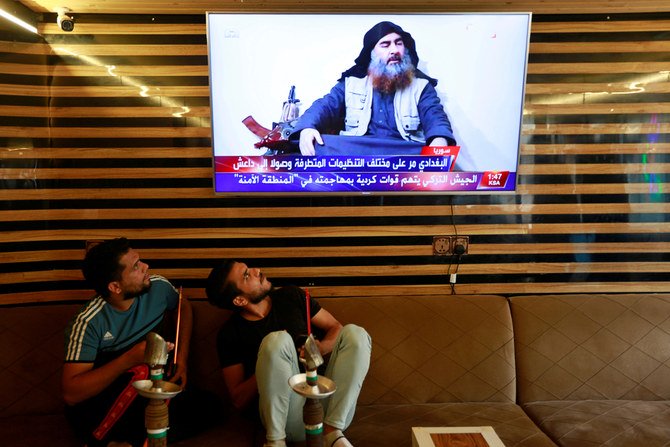
- ARAB NEWS
- 25 Apr 2024

Siraj Wahab and Menekse Tokyay
Jeddah/Ankara: The US special forces in eight helicopter gunships left Anbar province in western Iraq and flew low and fast below the night sky of northern Syria.
Their destination: Barisha, just north of Idlib, 5 kilometers from the Turkish border. Their target: Abu Bakr Al-Baghdadi, founder and leader of Daesh, and the world’s most wanted terrorist, with a $25 million bounty on his head.
The flight was far from safe. The ground beneath the US aircraft bristled with conflicting military forces in Syria’s complex civil war — from the Assad regime, Russia, Iran and Turkey, to myriad heavily armed extremist militias, many linked to Al-Qaeda.
However, Russia controls the airspace and both Moscow and Ankara had been tipped off that a US mission was underway. The gunships, and their accompanying attack drones, reached their destination unharmed.
Only there did they encounter armed defensive action from the ground, which was swiftly dealth with by a display of devastating firepower from above.
Until then, asleep in the hideout in Barisha where he had spent the previous 48 hours, Al-Baghdadi must have thought he was safe. But as the US special forces blasted their way into his compound and hunted him down, he knew it was all over.
Wearing a suicide vest and chased by US troops with pursuit dogs, the Daesh leader fled into a dead-end tunnel, taking three children with him.
Confronted with either capture or death, Al-Baghdadi chose the latter, and detonated his explosive vest — not only killing himself, but adding three more innocent lives to the toll of thousands that he and his followers had already taken.
AL-BAGHDADI SIGNIFICANT DATES
In the Situation Room at the White House in Washington, DC, US President Donald Trump watched the events unfold via a live video feed, accompanied by senior administration officials, security advisers and military chiefs. When it was over, and US forces safely back at base, he tweeted: “Something very big has just happened!”
It had indeed. The significance of Al-Baghdadi’s death may be gauged by the number of countries and individuals lining up to claim credit for having played a key role.
In northern Syria, Kurdish fighters from the Syrian Democratic Forces (SDF) said they had supplied crucial intelligence on Al-Baghdadi’s whereabouts.
Their commander, Mazloum Abdi, said it was a joint operation after “cooperation on the ground and accurate monitoring” for five months. He called it “successful and historic” joint intelligence work.
In Iraq, senior officials said vital intelligence was obtained after an Al-Baghdadi aide was killed by a US airstrike in western Iraq. The man’s wife was arrested and was a key source of information on the Daesh leader’s whereabouts. Al-Baghdadi’s brother-in-law was also arrested by the Iraqis, and supplied further information.
In Ankara, the defense ministry said: “Turkey exchanged information and coordinated with US military counterparts prior to the US operation in Idlib.
“We continue to work with our friends and allies against terrorism in all its forms and manifestations. It’s time to eliminate all the remaining terrorist leaders.”
In remarks on Sunday, Trump paid tribute to the many victims of Daesh’s gruesome filmed executions at the height of their so-called “caliphate”, and their families were swift to respond to Al-Baghdadi’s death.
“I am grateful to our president and brave troops for finding Al-Baghdadi,” said Diane Foley, whose son James was among the victims. “I hope this will hinder the resurgence of terror groups and I pray that captured fighters will be brought to trial and held accountable.”
Safi Al-Kasasbeh, whose son Muath was a Royal Jordanian Air Force pilot burned to death by Daesh after his F-16 jet crashed over Syria in December 2014, said: “I congratulate myself and the whole Muslim nation. This tyrant and terrorist has caused damage to the image of Islam and portrayed it as a terrorist religion. Islam is innocent of such a coward.
“I had hoped I would have the chance to kill him myself, but nevertheless this news of him being terminated has calmed the rage and fire inside me.”